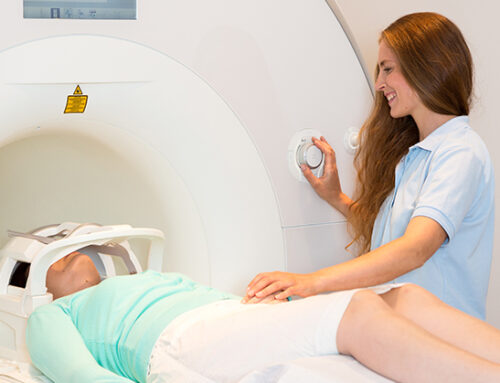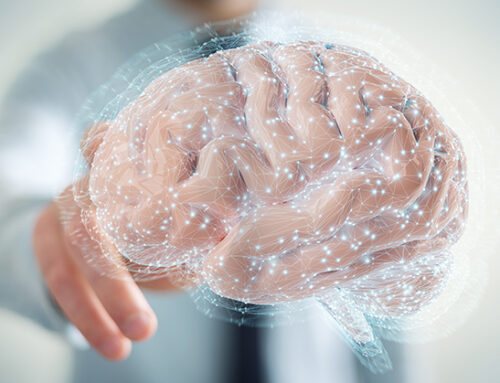What if you were a doctor and you could successfully treat only 25 percent of the patients who came to you with a particular problem? You’d probably conclude that the condition was a very challenging one.
And if you started with the assumption that the condition was due to moral weakness in your patients, your protocol and attitude would reflect that. Then it becomes a self-fulfilling prophecy.
Charles Gant, M.D., PhD, a long-time expert in treating addictions naturally, points to various failures in traditional addiction treatment protocols and believes there’s a better way… supporting your brain with the nutrients it needs.
Read on for the details…
Millions of chemical reactions occur every second of every day in every cell in your body. And each of those reactions requires specific nutrients to fuel them. If you’re not getting the required nutrients, chemical imbalances will leave you susceptible to physical and mental health deterioration… and addictions.
These imbalances are especially problematic in your brain cells, or neurons.
Neurons produce substances called neurotransmitters. They’re your brain’s messengers– the communicators. They control nearly everything in your body.
Neurotransmitters dramatically affect our moods and behavior. When your brain can’t produce enough of them due to poor nutrition, toxins, illness, genetic vulnerabilities, or stress, you may feel agitated, angry, restless, depressed, or unable to focus. It’s no surprise so many of us reach for substances to cope.
Why You (Temporarily) Feel Better When You Use Substances
When you use an addictive substance to compensate for a poorly balanced brain, you further short-circuit your brain chemistry. The substance temporarily makes you feel better by “fooling” your brain into thinking it’s producing enough of a missing neurotransmitter.
And since your brain tries to tightly control neurotransmitter levels, it stops producing natural neurotransmitters in response to the fake ones. So, your shortages of natural neurotransmitters rise, as you become dependent on ever-increasing amounts of the substance to just “feel normal” again.
Here’s an example from Dr. Gant…
The neurotransmitter dopamine powerfully affects how we feel and behave and gives us the fullest enjoyment from pleasurable experiences. However, if there’s a shortage of even one key nutrient, dopamine levels may plummet.
Several drugs, especially cocaine and certain amphetamines, act as dopamine substitutes. They can adversely affect natural dopamine production, making you more and more dependent on the drug.
A Key To Recovery
Dr. Gant believes that 25 years of clinical experience and a mountain of research shows that substance abuse problems are primarily the result of biochemical imbalances in the brain. The key to recovery is to get your brain chemistry back to normal – with nutrients that support your brain’s neurotransmitter production.
This rebalances your brain and body chemistry. It helps you experience your own feelings again, not the feelings that are artificially induced by some substance.
Dr. Gant says that the failure rate of conventional substance abuse strategies is so high because none of them consider the biochemical aspects of substance abuse.
Where The Four Conventional Substance Abuse Treatments Fail
Conventional approaches to healing substance abuse have been used for 175 years and have a deplorable track record. They are often founded on myths such as drugs, alcohol, and nicotine cause substance abuse and, even if you successfully stop using the substance, you’ll constantly struggle not to relapse for the rest of your life.
Dr. Gant shares the four most popular approaches to substance abuse treatment and the specific problems he sees with each of them:
- Moral approach: This is often based on the myth that substance abuse stems from a lack of willpower, and moral and spiritual weakness. Substance abusers often become ostracized from family and friends, as well as people in the community and workplace.
- Psychological approach: Many substance abusers receive very intensive and very competent counseling… including those in prison for drug abuse. Yet 80 percent of them relapse or end up back in prison.
- Medical/psychiatric approach: Substance abuse has been dubbed a “disease.” The professional view is that the substance caused the disease. Unfortunately, many of the drugs thrown out as a medical solution are also addictive drugs. With this approach the recovery “depends” on the skill of the attending physician and effectiveness of the drugs, instead of the power of the individual. Recovery rates are below 30 percent with this approach.
- Psychotropic substance approach: This approach is based on the myth that chronic substance users are “victims” of a disease that should be treated with prescription drugs, as we treat other diseases. Psychotropic drugs work by mimicking the effect of neurotransmitters. The substance can occupy receptors designed for a specific neurotransmitter. In effect, it fools the brain into thinking it is producing its natural neurotransmitters in adequate amounts.
- These are the cornerstone beliefs of traditional approaches to substance abuse. The only problem is they don’t yield good long-term results. On average, just 25 percent of people who use these conventional approaches recover. That means your chance of recovery through these four conventional approaches is a lousy one in four! Not very good odds.
How Nutrients Help Fight Addiction
At one point early in his career Dr. Gant had been plagued by periods of low motivation and lack of energy. He read two articles about using the amino acid tyrosine for treating depression. So, he immediately went out and bought tyrosine for himself.
Less than two hours after starting tyrosine his depression lifted. He attributed its success to the positive effect tyrosine has on the dopamine production.
As it turned out, this was only the tip of the iceberg. Much research has been done in the past few decades on neurotransmitters, their chemical makeup, and how to support their production. One discovery was how nutrients are the only substance necessary to produce neurotransmitters.
Secondly, scientists have discovered additional neurotransmitters (besides dopamine) that have a profound impact on how we think, feel, and act.
Biochemically, there are only two types of substances – nutrients and toxins. Any substance that can’t be used to carry out your body’s cellular processes is a toxin.
The Missing Part Of The Treatment Equation
Dr. Gant warns that unless the biochemical imbalances within the brain’s system of neurotransmitters — the root cause of substance abuse issues — are addressed, the benefits of all the traditional approaches in a person’s healing will be marginal.
He points to four types of neurotransmitters that guide our behaviors and influence the development of compulsive or addictive behaviors.
1. Endorphins and enkephalins – natural pain relievers.
You’ve heard of the “runner’s high.” It’s caused by endorphins. Substances that mimic endorphins include morphine, heroin, Oxycontin, codeine, methadone, Demerol, and alcohol.
They’re all different from your natural neurotransmitters, in that they cannot easily be broken down. They occupy your pain receptors for long periods of time, making them highly addictive.
2. Serotonin – soothes negative emotions.
Serotonin is generally considered an emotional relaxant. The inability to produce enough serotonin triggers emotional burnout and is one of the primary causes of depression.
Substances that disrupt your serotonin levels include SSRI (Serotonin-Selective Reuptake Inhibitor) drugs. SSRIs worsen serotonin deficiencies.
That’s why when you quit SSRI use, symptoms of serotonin deficiency strike hard – including irritability, rage, compulsive behavior, and anxiety.
Refined sugar can also disrupt the serotonin cycle. If you’ve ever reached for a box of candy or bag of cookies as a “pick-me-up” you were probably trying to boost your serotonin levels.
Another sign of serotonin deficiency is insomnia and the inability to sleep all night long.
3. Gamma-aminobutyric acid (GABA) – alleviates anxiety and worry.
GABA helps you relax and calms your racing thoughts. GABA deficiencies are linked to chronic anxiety and panic attacks. GABA has been called the “natural Valium of the brain.” But it should read the other way around, Valium should be called “the unnatural GABA,” according to Dr. Gant.
Alcohol mimics GABA, which is why so many people use alcohol to relax and unwind and then become dependent. In addition, many of the drugs used in the treatment of anxiety disorders (the benzodiazepines, which includes Valium and others) can be highly addictive.
4. Catecholamines – help you focus and experience pleasure in everyday activities.
These are natural go-for-the-gusto neurotransmitters, including dopamine and norepinephrine. They are energizing, produce feelings of euphoria, and intense concentration. Long-term stress can deplete our catecholamines and limit our ability to produce more.
Where Do You Start?
Dr. Gant advises anyone seeking to overcome (or avoid) a substance problem start with cutting nonessential foods to a bare minimum. He suggests increasing consumption of high-protein, higher-fat (healthy fats), nutrient-dense foods including eggs, meat, poultry, fish, dairy, beans, nuts, and seeds.
It goes without saying that avoiding processed foods is a must and so is continuing to consume healthy amounts of whole grains, fresh vegetables, and fruits.
Supplements of amino acids and other nutrients that influence healthy neurotransmitter production in the brain are widely available. These include L-tyrosine, SAMe (s-adenosyl methionine), 5-HTP, phosphatidylserine, folic acid and vitamin B12. Fish oil (omega-3 fatty acids) and vitamin D are also important.
My Takeaway
Dr. Gant makes some valid points with his approach, however it’s important to say that conventional substance abuse treatment is very effective—and life-saving— for many people.
If you or a loved one is suffering from substance abuse, I encourage you to seek help from your doctor, therapist, or a medical treatment center that specializes in the addiction. In addition, I would strongly consider investigating the nutritional support Dr. Gant promotes as an additional therapy, not a substitute. To learn more about Dr. Gant’s approach, his book, End Your Addiction Now: The Proven Supplement Program that Can Set You Free, is available on Amazon.







